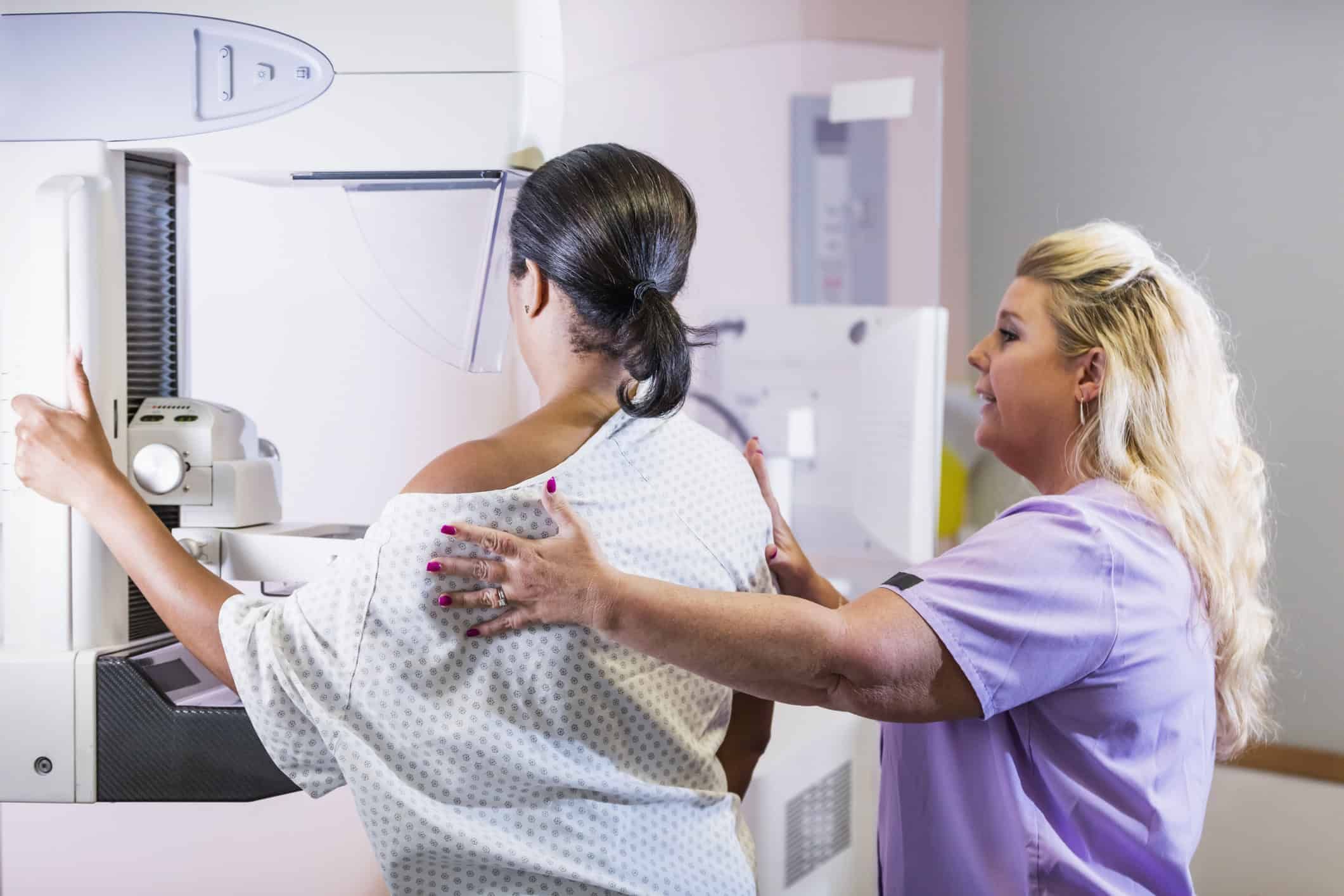Breast Health
Want to learn more about this at Kettering Health?
At a Glance
Q: What should I do if I find a lump in my breast?
A: Schedule a diagnostic mammogram. Most lumps aren’t cancer, but testing is essential to confirm.
- Breast cancer can cause dimpling, redness, or nipple changes.
- Benign lumps include cysts and fibroadenomas.
- Diagnostic mammograms often include ultrasound for accuracy.
Monthly breast self-exams are essential for staying aware of your breast health. They also improve your chances of finding breast cancer early. But what happens if you find a lump?
Dr. Bruce Gearhart and Dr. Meghan Musser, diagnostic radiologists, explain that the next step is to have a diagnostic mammogram. They share what to expect before and during your appointment.
Finding a lump
Breast tissue is naturally uneven. But any fixed, hard knot or lump should be evaluated.
Breast cancer may cause other changes in your breast, such as
- Dimpling or puckering
- Redness, rashes, or swelling
- Sudden nipple inversion or discharge
Finding a lump in your breast is scary, but it isn’t always breast cancer.
“There are solid lumps that are not cancerous,” Dr. Gearhart says.
Benign breast lumps include cysts as well as
- Fibroadenoma: noncancerous tumor made up of granular and connective tissue
- Adenosis: enlarged lobules (milk glands)
- Lipoma: fatty tissue
- Hematoma: clotted blood after surgery or trauma
Any lump or change in your breast should be evaluated with a diagnostic mammogram, which your primary care provider will order.
Waiting for your mammogram
It’s normal to want answers right away or to imagine the worst while waiting for your appointment, but Dr. Gearhart clarifies that waiting a few days to a week shouldn’t be cause for concern.
“Breast cancer typically progresses slowly.” Dr. Gearhart says. “So a short delay in scheduling a mammogram is unlikely to impact outcomes.”
Dr. Musser suggests waiting seven to 10 days after your period to reduce discomfort during your mammogram.
“Some women experience breast tenderness around their menstrual cycle,” Dr. Musser says. “If that is something you’ve noticed, we recommend you schedule at a different time during the month to minimize the discomfort you’re already feeling in your breast.”
You can do other things, too, on the day of your appointment to make the exam as comfortable as possible
The day of your mammogram
What to wear, eat, and drink
Consider wearing a two-piece outfit—not a dress or jumpsuit—to your appointment so you can undress from the waist up.
Dr. Mussser also recommends not wearing deodorant or antiperspirant. Cancer masses appear white on mammograms, and deodorant or antiperspirant may also appear white, interfering with the results.
As for food and beverages, you can eat as you usually would, but Dr. Musser recommends avoiding caffeine as soon as possible before your mammogram to reduce breast tenderness.
The exam
Screening mammograms take two images of each breast, but diagnostic mammograms require more images from multiple angles. A diagnostic mammogram often includes an ultrasound of the breasts as well.
While it’s normal to feel some discomfort during the exam, you should tell your technologist if you feel any pain.
“We try to make it as smooth and painless as possible to get you in and out of our centers,” Dr. Mussers says.
After your diagnostic mammogram, you will know your next steps before leaving.










